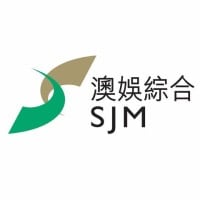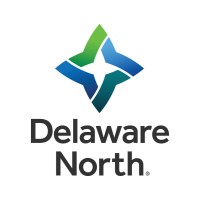
Las Vegas Sands Corp. Company Cyber Security Posture
sands.comFounded in 1990, Las Vegas Sands is the preeminent developer and operator of world-class integrated resorts that drive valuable business and leisure tourism in the regions where we operate. Featuring an array of richly diverse and compelling offerings under one roof, our integrated resorts blend luxury hotels and state-of-the-art meeting and convention facilities with a variety of amenities such as gaming, celebrity chef restaurants, high-end shopping and an action-packed schedule of concerts, shows, exhibits and other attractions. Sands has a 30-year track record of successfully developing and operating some of the largest and most complex business and leisure properties in the world, generating significant economic benefits for our host regions and enhancing their stature as global tourism and business capitals. Our integrated resorts propel continuous positive impact through tourism, jobs and community investments that make our regions great places to live, work and visit. Sands is dedicated to being a good corporate citizen, anchored by the core tenets of serving people, planet and communities. We deliver a great working environment for our team members worldwide, drive social impact through the Sands Cares community engagement and charitable giving program and lead in environmental performance through the award-winning Sands ECO360 global sustainability program. Sands is not just a developer. We are developers of positive impact.
LVSC Company Details
las-vegas-sands-corporation
993 employees
35291.0
721
Hospitality
sands.com
Scan still pending
LAS_2585597
In-progress
Between 900 and 1000
This score is AI-generated and less favored by cyber insurers, who prefer the TPRM score.
 LVSC Global Score
LVSC Global Score.png)

Las Vegas Sands Corp. Company Scoring based on AI Models
| Model Name | Date | Description | Current Score Difference | Score |
|---|---|---|---|---|
| AVERAGE-Industry | 03-12-2025 | This score represents the average cybersecurity rating of companies already scanned within the same industry. It provides a benchmark to compare an individual company's security posture against its industry peers. | N/A | Between 900 and 1000 |
Las Vegas Sands Corp. Company Cyber Security News & History
| Entity | Type | Severity | Impact | Seen | Url ID | Details | View |
|---|
Las Vegas Sands Corp. Company Subsidiaries

Founded in 1990, Las Vegas Sands is the preeminent developer and operator of world-class integrated resorts that drive valuable business and leisure tourism in the regions where we operate. Featuring an array of richly diverse and compelling offerings under one roof, our integrated resorts blend luxury hotels and state-of-the-art meeting and convention facilities with a variety of amenities such as gaming, celebrity chef restaurants, high-end shopping and an action-packed schedule of concerts, shows, exhibits and other attractions. Sands has a 30-year track record of successfully developing and operating some of the largest and most complex business and leisure properties in the world, generating significant economic benefits for our host regions and enhancing their stature as global tourism and business capitals. Our integrated resorts propel continuous positive impact through tourism, jobs and community investments that make our regions great places to live, work and visit. Sands is dedicated to being a good corporate citizen, anchored by the core tenets of serving people, planet and communities. We deliver a great working environment for our team members worldwide, drive social impact through the Sands Cares community engagement and charitable giving program and lead in environmental performance through the award-winning Sands ECO360 global sustainability program. Sands is not just a developer. We are developers of positive impact.
Access Data Using Our API

Get company history
.png)
LVSC Cyber Security News
Court Approves $45M Settlement in MGM Resorts Hack Class Action
The United State District Court for the District of Nevada granted preliminary approval of a $45 million settlement in a class action suit ...
Las Vegas Sands' Casino Network hit by Destructive Malware
Hackers crippled thousands of servers and computers across the network of the giant Las Vegas Sands Corp. by wiping them with highly destructive malware.
Securing hotel operations across multiple brands, owners
“The key for us is segmenting all that data,” Haertling said. At the company's Macau property, each division is run as an “independent island,” ...
After MGM and Caesars hacks, cybersecurity experts warn ‘anybody is vulnerable’
Cyber technology experts said the attacks on MGM Resorts International and Caesars Entertainment won't be the last attempt on the gaming ...
Iran hacked an American casino, U.S. says
It's been a year since American billionaire Sheldon Adelson's casino company was hacked. Now the blame is officially being placed on Iran.
Iran’s Cyber Attack on Billionaire Adelson Provides Lesson on Strategy
The digital feud between the U.S. and Iran dates back more than a decade, to when a devastating digital worm called Stuxnet crippled an Iranian ...
Now at the Sands Casino: An Iranian Hacker in Every Server
Sheldon Adelson's Las Vegas Sands Corp. was hit with a security breach in February. Is this the next frontier of cyberwarfare?
Iranian hackers downed Adelson’s casino empire
In February, Iranian hackers took down the computer system of gambling magnate Sheldon Adelson's casino empire, wiping hard drives clean and ...
Iranian Hackers Paralyzed Billionaire Sheldon Adelson's Las Vegas Casino
The FBI recently warned US businesses to be wary of Iran's sophisticated hacking operations, which have targeted defense contractors, energy ...

LVSC Similar Companies

Kerzner International
Kerzner International has built a diverse collection of iconic brands and luxury properties, earning international acclaim for pioneering destination-defining hospitality, delivering unrivalled service, and curating transformative guest experiences. We are renowned for creating hospitality brands

Scandic Hotels
Scandic is the largest hotel company in the Nordic countries with a network of about 280 hotels with 58,000 rooms in operation and under development, in more than 130 destinations. The company is the leader when it comes to integrating sustainability in all operations and its award-winning Design

Omni La Mansión del Rio
The Omni La Mansion del Rio is ideally nestled along the historic Riverwalk among the banks of the Paseo del Rio in downtown San Antonio. It is within easy walking distance of the famous Alamo, El Mercado, La Villita District, Spanish governor’s Palace, San Antonio Convention Center and other well-k

SJM Resorts
SJM Resorts, S.A. ("SJM") is one of the six concessionaires in Macau, authorised by the Government of the Macau Special Administrative Region to operate casinos and gaming areas. SJM is also the only casino gaming concessionaire with its roots in Macau. SJM owns and operates the Grand Lisboa Palace

Delaware North
Delaware North is a global leader in the hospitality and entertainment industry. The company annually serves more than a half-billion guests across three continents, including at high-profile sports venues, airports, national and state parks, restaurants, resorts, hotels and casinos. Building on mor

Four Seasons Hotels and Resorts
Four Seasons Hotels and Resorts opened its first hotel in 1961, and since that time has been dedicated to perfecting the travel experience through continual innovation and the highest standards of hospitality. Currently operating more than 120 hotels and resorts, and more than 50 residential propert

Frequently Asked Questions (FAQ) on Cybersecurity Incidents
LVSC CyberSecurity History Information
Total Incidents: According to Rankiteo, LVSC has faced 0 incidents in the past.
Incident Types: As of the current reporting period, LVSC has not encountered any cybersecurity incidents.
Total Financial Loss: The total financial loss from these incidents is estimated to be {total_financial_loss}.
Cybersecurity Posture: The company's overall cybersecurity posture is described as Founded in 1990, Las Vegas Sands is the preeminent developer and operator of world-class integrated resorts that drive valuable business and leisure tourism in the regions where we operate. Featuring an array of richly diverse and compelling offerings under one roof, our integrated resorts blend luxury hotels and state-of-the-art meeting and convention facilities with a variety of amenities such as gaming, celebrity chef restaurants, high-end shopping and an action-packed schedule of concerts, shows, exhibits and other attractions. Sands has a 30-year track record of successfully developing and operating some of the largest and most complex business and leisure properties in the world, generating significant economic benefits for our host regions and enhancing their stature as global tourism and business capitals. Our integrated resorts propel continuous positive impact through tourism, jobs and community investments that make our regions great places to live, work and visit. Sands is dedicated to being a good corporate citizen, anchored by the core tenets of serving people, planet and communities. We deliver a great working environment for our team members worldwide, drive social impact through the Sands Cares community engagement and charitable giving program and lead in environmental performance through the award-winning Sands ECO360 global sustainability program. Sands is not just a developer. We are developers of positive impact..
Detection and Response: The company detects and responds to cybersecurity incidents through {description_of_detection_and_response_process}.
Incident Details
Incident 1: Ransomware Attack
Title: {Incident_Title}
Description: {Brief_description_of_the_incident}
Date Detected: {Detection_Date}
Date Publicly Disclosed: {Disclosure_Date}
Date Resolved: {Resolution_Date}
Type: {Type_of_Attack}
Attack Vector: {Attack_Vector}
Vulnerability Exploited: {Vulnerability}
Threat Actor: {Threat_Actor}
Motivation: {Motivation}
Incident 2: Data Breach
Title: {Incident_Title}
Description: {Brief_description_of_the_incident}
Date Detected: {Detection_Date}
Date Publicly Disclosed: {Disclosure_Date}
Date Resolved: {Resolution_Date}
Type: {Type_of_Attack}
Attack Vector: {Attack_Vector}
Vulnerability Exploited: {Vulnerability}
Threat Actor: {Threat_Actor}
Motivation: {Motivation}
Common Attack Types: As of now, the company has not encountered any reported incidents involving common cyberattacks.
Identification of Attack Vectors: The company identifies the attack vectors used in incidents through {description_of_identification_process}.
Impact of the Incidents
Incident 1: Ransomware Attack
Financial Loss: {Financial_Loss}
Data Compromised: {Data_Compromised}
Systems Affected: {Systems_Affected}
Downtime: {Downtime}
Operational Impact: {Operational_Impact}
Conversion Rate Impact: {Conversion_Rate_Impact}
Revenue Loss: {Revenue_Loss}
Customer Complaints: {Customer_Complaints}
Brand Reputation Impact: {Brand_Reputation_Impact}
Legal Liabilities: {Legal_Liabilities}
Identity Theft Risk: {Identity_Theft_Risk}
Payment Information Risk: {Payment_Information_Risk}
Incident 2: Data Breach
Financial Loss: {Financial_Loss}
Data Compromised: {Data_Compromised}
Systems Affected: {Systems_Affected}
Downtime: {Downtime}
Operational Impact: {Operational_Impact}
Conversion Rate Impact: {Conversion_Rate_Impact}
Revenue Loss: {Revenue_Loss}
Customer Complaints: {Customer_Complaints}
Brand Reputation Impact: {Brand_Reputation_Impact}
Legal Liabilities: {Legal_Liabilities}
Identity Theft Risk: {Identity_Theft_Risk}
Payment Information Risk: {Payment_Information_Risk}
Average Financial Loss: The average financial loss per incident is {average_financial_loss}.
Commonly Compromised Data Types: The types of data most commonly compromised in incidents are {list_of_commonly_compromised_data_types}.
Incident 1: Ransomware Attack
Entity Name: {Entity_Name}
Entity Type: {Entity_Type}
Industry: {Industry}
Location: {Location}
Size: {Size}
Customers Affected: {Customers_Affected}
Incident 2: Data Breach
Entity Name: {Entity_Name}
Entity Type: {Entity_Type}
Industry: {Industry}
Location: {Location}
Size: {Size}
Customers Affected: {Customers_Affected}
Response to the Incidents
Incident 1: Ransomware Attack
Incident Response Plan Activated: {Yes/No}
Third Party Assistance: {Yes/No}
Law Enforcement Notified: {Yes/No}
Containment Measures: {Containment_Measures}
Remediation Measures: {Remediation_Measures}
Recovery Measures: {Recovery_Measures}
Communication Strategy: {Communication_Strategy}
Adaptive Behavioral WAF: {Adaptive_Behavioral_WAF}
On-Demand Scrubbing Services: {On_Demand_Scrubbing_Services}
Network Segmentation: {Network_Segmentation}
Enhanced Monitoring: {Enhanced_Monitoring}
Incident 2: Data Breach
Incident Response Plan Activated: {Yes/No}
Third Party Assistance: {Yes/No}
Law Enforcement Notified: {Yes/No}
Containment Measures: {Containment_Measures}
Remediation Measures: {Remediation_Measures}
Recovery Measures: {Recovery_Measures}
Communication Strategy: {Communication_Strategy}
Adaptive Behavioral WAF: {Adaptive_Behavioral_WAF}
On-Demand Scrubbing Services: {On_Demand_Scrubbing_Services}
Network Segmentation: {Network_Segmentation}
Enhanced Monitoring: {Enhanced_Monitoring}
Incident Response Plan: The company's incident response plan is described as {description_of_incident_response_plan}.
Third-Party Assistance: The company involves third-party assistance in incident response through {description_of_third_party_involvement}.
Data Breach Information
Incident 2: Data Breach
Type of Data Compromised: {Type_of_Data}
Number of Records Exposed: {Number_of_Records}
Sensitivity of Data: {Sensitivity_of_Data}
Data Exfiltration: {Yes/No}
Data Encryption: {Yes/No}
File Types Exposed: {File_Types}
Personally Identifiable Information: {Yes/No}
Prevention of Data Exfiltration: The company takes the following measures to prevent data exfiltration: {description_of_prevention_measures}.
Handling of PII Incidents: The company handles incidents involving personally identifiable information (PII) through {description_of_handling_process}.
Ransomware Information
Incident 1: Ransomware Attack
Ransom Demanded: {Ransom_Amount}
Ransom Paid: {Ransom_Paid}
Ransomware Strain: {Ransomware_Strain}
Data Encryption: {Yes/No}
Data Exfiltration: {Yes/No}
Ransom Payment Policy: The company's policy on paying ransoms in ransomware incidents is described as {description_of_ransom_payment_policy}.
Data Recovery from Ransomware: The company recovers data encrypted by ransomware through {description_of_data_recovery_process}.
Regulatory Compliance
Incident 1: Ransomware Attack
Regulations Violated: {Regulations_Violated}
Fines Imposed: {Fines_Imposed}
Legal Actions: {Legal_Actions}
Regulatory Notifications: {Regulatory_Notifications}
Incident 2: Data Breach
Regulations Violated: {Regulations_Violated}
Fines Imposed: {Fines_Imposed}
Legal Actions: {Legal_Actions}
Regulatory Notifications: {Regulatory_Notifications}
Regulatory Frameworks: The company complies with the following regulatory frameworks regarding cybersecurity: {list_of_regulatory_frameworks}.
Ensuring Regulatory Compliance: The company ensures compliance with regulatory requirements through {description_of_compliance_measures}.
Lessons Learned and Recommendations
Incident 1: Ransomware Attack
Lessons Learned: {Lessons_Learned}
Incident 2: Data Breach
Lessons Learned: {Lessons_Learned}
Incident 1: Ransomware Attack
Recommendations: {Recommendations}
Incident 2: Data Breach
Recommendations: {Recommendations}
Key Lessons Learned: The key lessons learned from past incidents are {list_of_key_lessons_learned}.
Implemented Recommendations: The company has implemented the following recommendations to improve cybersecurity: {list_of_implemented_recommendations}.
References
Additional Resources: Stakeholders can find additional resources on cybersecurity best practices at {list_of_additional_resources}.
Investigation Status
Incident 1: Ransomware Attack
Investigation Status: {Investigation_Status}
Incident 2: Data Breach
Investigation Status: {Investigation_Status}
Communication of Investigation Status: The company communicates the status of incident investigations to stakeholders through {description_of_communication_process}.
Stakeholder and Customer Advisories
Incident 1: Ransomware Attack
Stakeholder Advisories: {Stakeholder_Advisories}
Customer Advisories: {Customer_Advisories}
Incident 2: Data Breach
Stakeholder Advisories: {Stakeholder_Advisories}
Customer Advisories: {Customer_Advisories}
Advisories Provided: The company provides the following advisories to stakeholders and customers following an incident: {description_of_advisories_provided}.
Initial Access Broker
Incident 1: Ransomware Attack
Entry Point: {Entry_Point}
Reconnaissance Period: {Reconnaissance_Period}
Backdoors Established: {Backdoors_Established}
High Value Targets: {High_Value_Targets}
Data Sold on Dark Web: {Yes/No}
Incident 2: Data Breach
Entry Point: {Entry_Point}
Reconnaissance Period: {Reconnaissance_Period}
Backdoors Established: {Backdoors_Established}
High Value Targets: {High_Value_Targets}
Data Sold on Dark Web: {Yes/No}
Monitoring and Mitigation of Initial Access Brokers: The company monitors and mitigates the activities of initial access brokers through {description_of_monitoring_and_mitigation_measures}.
Post-Incident Analysis
Incident 1: Ransomware Attack
Root Causes: {Root_Causes}
Corrective Actions: {Corrective_Actions}
Incident 2: Data Breach
Root Causes: {Root_Causes}
Corrective Actions: {Corrective_Actions}
Post-Incident Analysis Process: The company's process for conducting post-incident analysis is described as {description_of_post_incident_analysis_process}.
Corrective Actions Taken: The company has taken the following corrective actions based on post-incident analysis: {list_of_corrective_actions_taken}.
Additional Questions
General Information
Ransom Payment History: The company has {paid/not_paid} ransoms in the past.
Last Ransom Demanded: The amount of the last ransom demanded was {last_ransom_amount}.
Last Attacking Group: The attacking group in the last incident was {last_attacking_group}.
Incident Details
Most Recent Incident Detected: The most recent incident detected was on {most_recent_incident_detected_date}.
Most Recent Incident Publicly Disclosed: The most recent incident publicly disclosed was on {most_recent_incident_publicly_disclosed_date}.
Most Recent Incident Resolved: The most recent incident resolved was on {most_recent_incident_resolved_date}.
Impact of the Incidents
Highest Financial Loss: The highest financial loss from an incident was {highest_financial_loss}.
Most Significant Data Compromised: The most significant data compromised in an incident was {most_significant_data_compromised}.
Most Significant System Affected: The most significant system affected in an incident was {most_significant_system_affected}.
Response to the Incidents
Third-Party Assistance in Most Recent Incident: The third-party assistance involved in the most recent incident was {third_party_assistance_in_most_recent_incident}.
Containment Measures in Most Recent Incident: The containment measures taken in the most recent incident were {containment_measures_in_most_recent_incident}.
Data Breach Information
Most Sensitive Data Compromised: The most sensitive data compromised in a breach was {most_sensitive_data_compromised}.
Number of Records Exposed: The number of records exposed in the most significant breach was {number_of_records_exposed}.
Ransomware Information
Highest Ransom Demanded: The highest ransom demanded in a ransomware incident was {highest_ransom_demanded}.
Highest Ransom Paid: The highest ransom paid in a ransomware incident was {highest_ransom_paid}.
Regulatory Compliance
Highest Fine Imposed: The highest fine imposed for a regulatory violation was {highest_fine_imposed}.
Most Significant Legal Action: The most significant legal action taken for a regulatory violation was {most_significant_legal_action}.
Lessons Learned and Recommendations
Most Significant Lesson Learned: The most significant lesson learned from past incidents was {most_significant_lesson_learned}.
Most Significant Recommendation Implemented: The most significant recommendation implemented to improve cybersecurity was {most_significant_recommendation_implemented}.
References
Most Recent Source: The most recent source of information about an incident is {most_recent_source}.
Most Recent URL for Additional Resources: The most recent URL for additional resources on cybersecurity best practices is {most_recent_url}.
Investigation Status
Current Status of Most Recent Investigation: The current status of the most recent investigation is {current_status_of_most_recent_investigation}.
Stakeholder and Customer Advisories
Most Recent Stakeholder Advisory: The most recent stakeholder advisory issued was {most_recent_stakeholder_advisory}.
Most Recent Customer Advisory: The most recent customer advisory issued was {most_recent_customer_advisory}.
Initial Access Broker
Most Recent Entry Point: The most recent entry point used by an initial access broker was {most_recent_entry_point}.
Most Recent Reconnaissance Period: The most recent reconnaissance period for an incident was {most_recent_reconnaissance_period}.
Post-Incident Analysis
Most Significant Root Cause: The most significant root cause identified in post-incident analysis was {most_significant_root_cause}.
Most Significant Corrective Action: The most significant corrective action taken based on post-incident analysis was {most_significant_corrective_action}.
What Do We Measure?
















Every week, Rankiteo analyzes billions of signals to give organizations a sharper, faster view of emerging risks. With deeper, more actionable intelligence at their fingertips, security teams can outpace threat actors, respond instantly to Zero-Day attacks, and dramatically shrink their risk exposure window.
These are some of the factors we use to calculate the overall score:
Identify exposed access points, detect misconfigured SSL certificates, and uncover vulnerabilities across the network infrastructure.
Gain visibility into the software components used within an organization to detect vulnerabilities, manage risk, and ensure supply chain security.
Monitor and manage all IT assets and their configurations to ensure accurate, real-time visibility across the company's technology environment.
Leverage real-time insights on active threats, malware campaigns, and emerging vulnerabilities to proactively defend against evolving cyberattacks.




